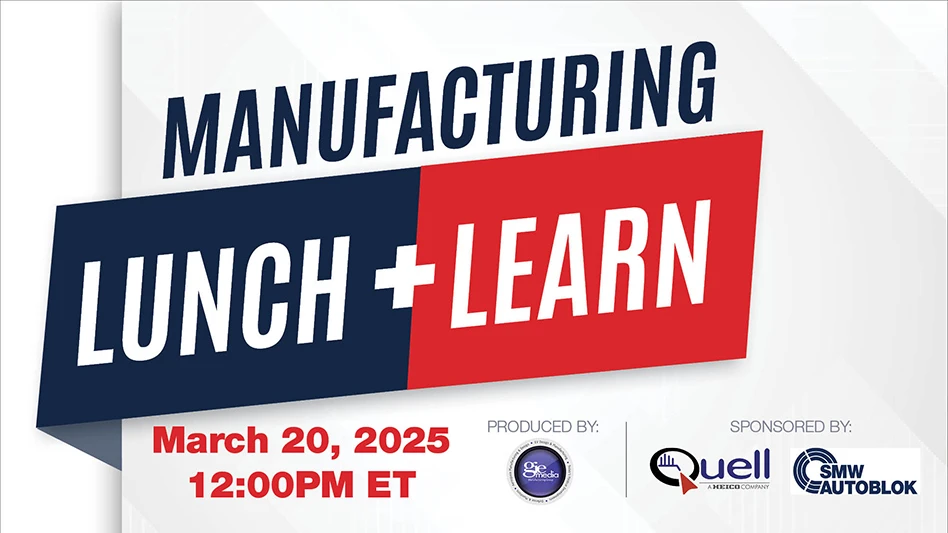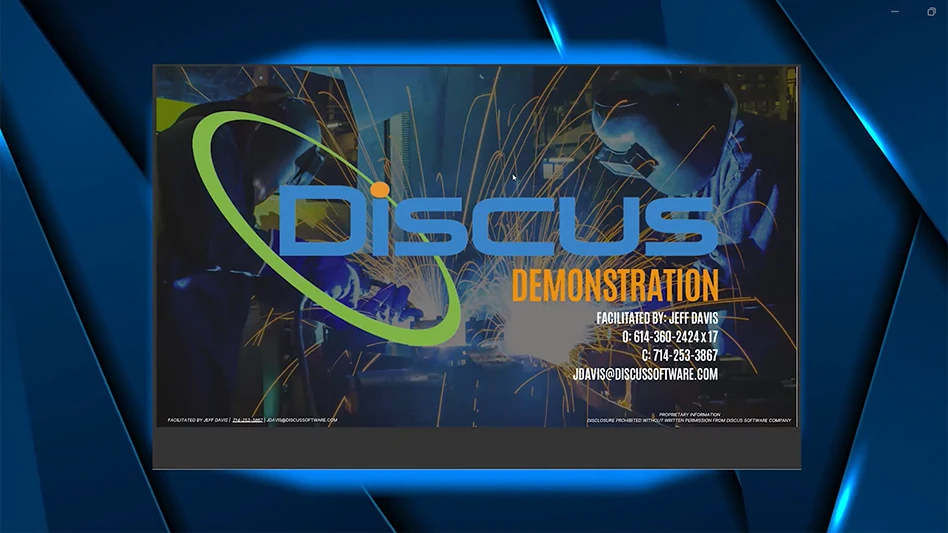 A builder of structural components for the aerospace industry, Dynamic NC in Rose Hill, Kansas, has a true handle on how to control costs. Process optimization through advanced technologies have helped the company achieve the competitive costs necessary to win the next job.
A builder of structural components for the aerospace industry, Dynamic NC in Rose Hill, Kansas, has a true handle on how to control costs. Process optimization through advanced technologies have helped the company achieve the competitive costs necessary to win the next job.
Recently, Dynamic NC won a bid to machine hard metal (13-8 stainless steel) 5-axis structural components and needed to purchase equipment to handle this work. Because of the pressures inherent in the aerospace industry, it needed a machine that could lower costs for that order. The company went in search of the equipment that would best fit the package.
“We do a lot of research to determine how to lower costs,” states Kyle Gakeler, director of operations at Dynamic NC. “While we wanted technology to achieve greater flexibility in hard-metal machining applications, we also wanted equipment that would keep costs low through improved cycle times, greater perishable tool life, equipment reliability, and reduced labor.”
The high-mix, low-volume production requirements of the aerospace market require manufacturers to maintain a process-oriented mindset at all times. This means continuous process research and development is a necessity, driving demand for flexible technology solutions.
Jim Gibbs, president of Dynamic NC, says, “We have little interest in comparing equipment based purely on price and specifications. We want to know about the actual long-term performance, associated costs, and process flexibility. It doesn’t matter what the machine can do, but what we can do with the machine.”
According to Gibbs, “In our industry they used to have a saying, ‘Good, cheap, and fast – pick two.’ But you can’t do that anymore. To be cost-effective, you have to provide all three. Good refers to the quality, which has to be there. And fast and cheap go together because the faster you can make a part, the cheaper it is. We needed a machine that could accomplish all of this.”
Mike Jones, director of engineering at Dynamic NC, agrees. “We believe you get what you pay for. Sure, we could spend less money on another machine, but that equipment would be more labor intensive, have longer run times, and the efficient process would not be there. All of that translates to higher costs, which leads to fewer contracts and a smaller bottom line. It makes more sense for us to spend money on a high-performance machine that delivers quality parts in a shorter cycle time. All worries are eliminated concerning waste, labor, repair, downtime, tooling, and maintenance – the hidden costs of ownership that factor into the overall purchase price. Many companies don’t even consider these up front like we do.”
New technology drives down costs
In 2013, Dynamic NC purchased a Makino a92 horizontal machining center and F9 vertical machining center to introduce hard-metal applications into its production environment while expanding on current capabilities as well. That experience, along with Makino’s presence in the Wichita area, factored into the company’s decision to purchase new equipment.
“We were already familiar with Makino from our own machining experience, and a few of us had worked with the Makino MAG-series and T2 horizontal machining centers at previous companies. So we felt that the T1 5-axis milling machine would deliver the quality and reliability we needed for this job,” Gibbs says. “In early 2014, we purchased the first two T1 machines sold in North America to use for our hard-metal machining of 5-axis structural components.”
Dynamic NC favors the T1 for the machine’s rigidity, stability, and kinematic structure, which offers a higher degree of flexibility in its process design and labor requirements. The 155° tilting A-axis and deep-chest column provide full 5-axis milling capability for parts up to 1,500mm in diameter. The Z-axis travel and ability to reach way above the table has proven to be versatile for all of the company’s applications.
 “The T1 is all about process flexibility,” Jones says. “Part accessibility has been really helpful to us. We always consider kinematics when producing our parts because it helps us be more efficient. It opens up more options on how to machine a part and access part features. The machine’s range of motion can help reduce the number of setups. Not only does that reduce labor, but we also know that parts are much more accurate the less they are moved.”
“The T1 is all about process flexibility,” Jones says. “Part accessibility has been really helpful to us. We always consider kinematics when producing our parts because it helps us be more efficient. It opens up more options on how to machine a part and access part features. The machine’s range of motion can help reduce the number of setups. Not only does that reduce labor, but we also know that parts are much more accurate the less they are moved.”
Because of its process-oriented culture, Dynamic NC examines the tools it uses in its applications and how best to use them to optimize processes. Engineers recognize that the cost associated with tooling for hard-metal machining isn’t inexpensive; therefore tool life is critical to its goal for lowest part costs.
“A lot of people measure tool life in minutes, but we measure them in hours or days,” Gakeler says. “Due to the T1’s rigidity and active damping system, we have found that even in hard metals and roughing, we can better predict tool life. We are also able to use a wider variety of tooling that we would not have been able to use in a competing machine. Even when burying a 1" end mill into a part for roughing, there is no vibration whatsoever.”
The rigid design, power, and accessibility of the T1 machines have enabled Dynamic NC to cut hardened materials without limitation. Gibbs likens their hard-metal machining processes to that of a surgeon, using the exact instruments in the precise manner for efficient and accurate results.
“The construction of the T1 provides a solid foundation for fixtures and all other machine components. With this level of stability, we find that cutting titanium is like cutting butter,” Gakeler says.
The machine’s high-pressure, high-volume, through-spindle coolant also has been essential in managing the cutting zone, effectively cooling the tools while evacuating chips to prevent recutting.
“The T1 gets coolant to the deep pockets, no matter the size of the tools,” Jones explains. “These features have led to significant improvements in tool life across all applications.”
He adds that in recent testing of a flap-track component, “We have achieved a 50% reduction in cycle time, 5x to 6x greater tool life, and an 80% reduction in machining labor with the T1. Similar results have been seen across many of our other applications.”
These process capabilities have enabled Dynamic NC to assert itself as the low-cost leader in hard-metal applications.
“For us, it’s not about the tool life or productivity,” Gakeler states. “It’s the total cost of the product that’s important. What goes into the cost of the product? Capital expenditures, labor, and perishable costs. We strive to minimize those. We need quality first in a product, but then the lowest cost is important. If I buy a premium machine that allows me to make parts in 5 minutes versus 20 minutes, then that is the most cost-effective.”
Moving forward with the entire package
Seeking a similar level of flexibility as it had achieved in its hard-metal parts, Dynamic NC purchased two MAG3.EX 5-axis horizontal machining centers to machine structural aluminum.
 “The MAG3.EX machines have helped us become an exceptional resource for complex monolithic aluminum aerospace parts,” Gakeler says. “We have been able to reduce the total cost of operation, including labor, cycle time, and tooling costs. We are getting the speed, accuracy, tool variety, chip evacuation, and a 33,000rpm spindle. A lot of machines look like they have the entire package but don’t have the spindle speed this machine does.”
“The MAG3.EX machines have helped us become an exceptional resource for complex monolithic aluminum aerospace parts,” Gakeler says. “We have been able to reduce the total cost of operation, including labor, cycle time, and tooling costs. We are getting the speed, accuracy, tool variety, chip evacuation, and a 33,000rpm spindle. A lot of machines look like they have the entire package but don’t have the spindle speed this machine does.”
Gibbs agrees, “I liken it to racing cars. The whole car is a system, and it takes the entire package to make the car go fast. If one part of the system goes down, it’s not going fast. The MAG3 has it all – with no limiting factors. I believe that it’s the most capable aluminum machine that Makino has. And though we’ve just put it on our floor, we are looking forward to seeing where it takes us.”
As Dynamic NC steers its course toward future growth, the success that it has seen with these machines has led it to make plans to add an automated pallet-handling system to the T1 and a92 equipment, and to purchase two more T1 machines. The company also expects to install an MMC2 pallet-handling system across the existing MAG3.EX cell, and to add a third MAG-series machine in the near future.
“This kind of technology has allowed us to not only reduce costs across the board but to also be the kind of resource that our customers can count on,” Gibbs explains. “What matters most to Dynamic NC is building a reputation for taking care of those around us – whether they be customers, colleagues, or the local community. For us, it’s all about making each day valuable and bringing meaning to what we do.”
Makino Inc.
www.makino.com
Dynamic NC
316.712.5028
Get curated news on YOUR industry.
Enter your email to receive our newsletters.
Explore the June 2015 Issue
Check out more from this issue and find your next story to read.
Latest from Aerospace Manufacturing and Design
- Ralliant to establish global headquarters in North Carolina
- Philatron MIL-DTL-3432 military cables
- Beyond Aero refines its hydrogen-electric light jet
- Americase's advanced protective solutions
- Social media - what are your thoughts
- GE Aerospace secures Air Force engine contract
- Thomson Industries' online sizing and selection tool
- #53 - Manufacturing Matters - 2024 Leaders in Manufacturing Roundtable






